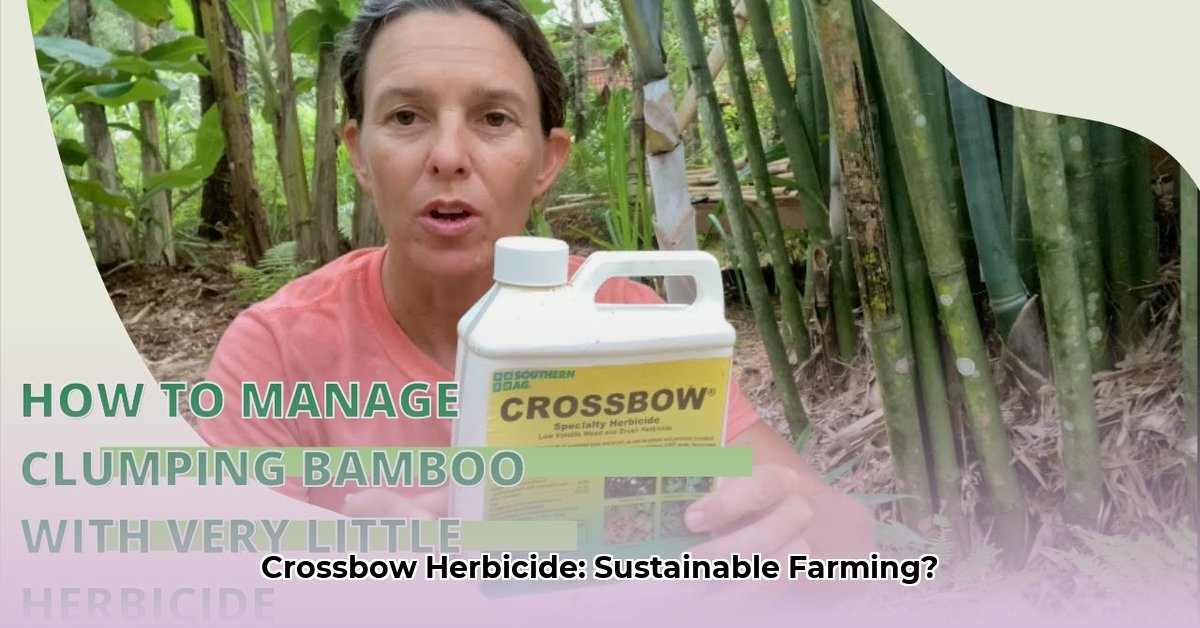
This guide provides information on Crossbow herbicide, its application, environmental impact, and its role within sustainable farming practices. We'll examine its efficacy, safety precautions, legal compliance, and explore alternative weed control methods. For more information on similar herbicides available at Tractor Supply, see this helpful resource.
Understanding Crossbow Herbicide
Crossbow herbicide, available at Tractor Supply, contains the active ingredients Triclopyr and 2,4-D. These target broadleaf weeds and woody plants. The product label provides crucial information on recommended application rates (amount per acre), specific target weeds, and application methods. Always consult the label before use; it is the primary source of information for safe and effective application. Failing to follow label instructions can lead to reduced efficacy or harm to non-target plants and organisms.
Efficacy and Environmental Impact
Crossbow demonstrates effectiveness against various broadleaf weeds and woody plants. Its active ingredients disrupt plant protein synthesis, resulting in rapid weed mortality. However, the long-term efficacy and environmental impact warrant further investigation. Independent research is needed to fully assess its impact on soil health, water quality, and beneficial insects. While its targeted action minimizes some environmental risks compared to broader-spectrum herbicides, responsible application and Integrated Pest Management (IPM) strategies remain crucial for mitigating potential negative effects. Does this mean Crossbow is inherently unsustainable? Not necessarily, but it highlights the necessity for well-informed and responsible use.
Safety Precautions and Legal Compliance
Safe handling of Crossbow is paramount. Always wear appropriate personal protective equipment (PPE), including gloves, long sleeves, eye protection, and a respirator as indicated on the product label. Follow label instructions meticulously for application methods, ensuring appropriate weather conditions and avoiding drift (the movement of the herbicide by wind to unintended areas). Proper disposal, as outlined on the label, is equally crucial to prevent water contamination and soil contamination. Adherence to all local, state, and federal regulations governing herbicide use is mandatory. Check with your local agricultural extension office or the Environmental Protection Agency (EPA) website for specific guidelines in your region. Failure to comply with regulations can lead to legal repercussions.
Best Practices for Sustainable Use and IPM Strategies
Integrating Crossbow into an IPM (Integrated Pest Management) strategy is key to sustainable agriculture. IPM aims to minimize pesticide use by combining various approaches. Here, Crossbow can be used selectively, targeting only problem weeds. Other IPM techniques include mechanical weed control (e.g., tilling, mowing), crop rotation, and the introduction of beneficial insects that control weeds naturally. By combining these approaches, farmers can reduce herbicide reliance, minimize environmental impact, and sustain long-term soil health and biodiversity. How can we improve the balance between weed control and environmental protection? Implementing a well-defined IPM plan is a crucial step.
Comparison with Alternatives
Organic farming practices prioritize weed control using natural methods. These might include mulching, cover cropping, and the use of natural herbicides derived from plants. Mechanical weed control methods (e.g., cultivation, mowing) can also reduce weed pressure. Each method has merits and drawbacks; the best choice depends on specific weed pressure, crop type, and environmental concerns. Weighing the pros and cons of all available options, and selecting the least impactful approach, is essential for sustainable weed management. What are the long-term cost-benefit implications of various weed control strategies? A thorough assessment is necessary to ensure economic viability and environmental sustainability.
Conclusion: Responsible Herbicide Use for Sustainable Farming
Crossbow herbicide offers effective weed control, but responsible, sustainable use is paramount. Careful planning, adherence to label instructions, and incorporation into an IPM strategy are critical for minimizing environmental impact. By combining Crossbow with other sustainable practices, farmers can achieve effective weed management while protecting the long-term health of their land and the environment. Always consult the product label and relevant regulatory information for up-to-date guidelines.
Resources
- Crossbow Product Label: (Insert link to product label here – this will vary based on supplier)
- EPA Website: (Insert link to the EPA's pesticide information website)
- Your State's Agricultural Extension Service: (Insert link to the relevant website here – this will vary by state)